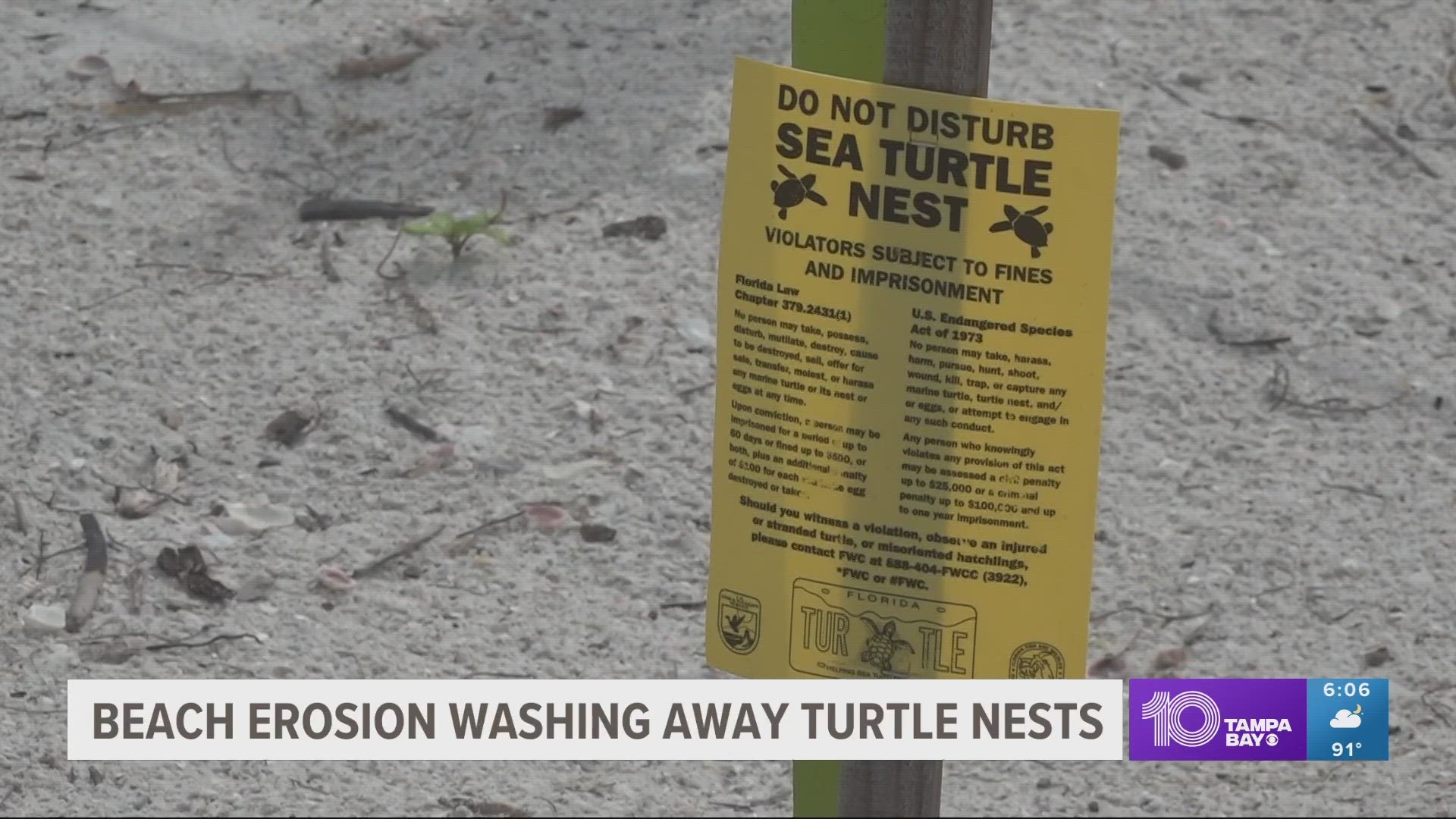ST. PETE BEACH, Fla. — With every wave that crashes ashore, it pulls back a little bit of the sand on Pinellas County beaches. Beach erosion has impacts on storm protection, tourism and the environment.
The less room on the beach leads to a smaller barrier between a hurricane and the homes and businesses there are along the coast. With eroding beaches, sea turtles have fewer spots to lay their nests.
To combat the erosion, the Army Corps of Engineers conducts beach renourishment. Sand is dredged offshore and then pumped onto the beaches.
There are multiple projects the Army Corps oversees. In Pinellas County, Treasure Island, Pass-a-Grille and Upham beaches are all a part of the same project.
"The Treasure Island nourishment project in 1969 was the first segment of the Pinellas County Shore Protection Project that was nourished since its authorization by Congress in 1966," the county website reads. "Upham Beach in St. Pete Beach followed in 1980 and Pass-a-Grille Beach in 1986. These beaches are generally nourished on a 4-5 year cycle, with Pass-a-Grille Beach being nourished every 10 years.
"Without nourishment projects, there would be little-to-no beach habitat, storm protection, or recreational area."
On Pass-a-Grille Beach, there are sections of the beach you can't walk along because too much sand has washed away. Beach renourishment is supposed to being in the fall of 2023, wrapping up by the summer of 2024.
Melinda McKenna and Jacquelyn Dawson are sea turtle trackers. The duo wakes up well before the sun is up to begin walking up and down the beaches – searching for turtle tracks.
"The issue with the beach erosion is that we can no longer bring our buggy or a truck on the lower part of Pass-a-Grille due to the high tide," Dawson explained. "So we usually end up walking that, so we do the full extent of St. Pete Beach and Pass-a-Grille which is four miles."
When a turtle nest is found, McKenna and Dawson place a self-releasing screen over the nest, protecting the eggs from coyotes and raccoons. Markers are also placed around the nest so beachgoers avoid the area.
With less sand on the beach, there are fewer safe places for turtles to lay their nests.
"They have to go further up into the dunes just to protect their eggs and if there's an erosion escarpment, that's impossible," McKenna said. "So we do have several times that the nests are washed over so they do not hatch due to that reason, because they don't have enough beach to lay their eggs on."
On Pass-a-Grille Beach, McKenna and Dawson worked to repair a destroyed sea turtle nest. The high tide and wind brought the waves even closer to the mangroves.
The inevitable was happening before their eyes. Dawson tried to fix the barrier, but the pair both knew these eggs won't hatch now.
Dr. John Bishop is the coastal management coordinator for Pinellas County. He said roughly 110 percent of Pass-a-Grille Beach has washed away since its last renourishment in 2014.
When asked if the project was moving forward as scheduled, his answer was bleak.
"Ss of our last meeting, they said it was going to be delayed," Bishop said.
He's referring to the Army Corps of Engineers. Bishop said the Army Corps is now asking for perpetual property easements for 100 percent of the areas zoned for beach renourishment, even if an area isn't being renourished.
"It's really frustrating that we have been meeting for over a year on this project and that these easement requests have come in at the last second," Bishop said.
Pass-a-Grille Beach is all public land, meaning perpetual property easements are needed. On Treasure Island, easements could be required. Lack of compliance on one beach may put renourishment on hold for another.
"They're combined," Bishop explained. "I don't know to what degree the Corps would be willing to separate them. I think it would largely depend on the amount of time required to get the easements, whether we can do it in a timely manner, and still get this project off the ground or whether it has to be modified to nourish what we can. I think, right now is still too early to tell."
When asked when the Army Corps will give an updated timeline for the project, Bishop said, "I've been asking. And I'm still waiting on a response."
"Our project was already in review by the Army Corps and now this issue has come up," he said. "And it seems like they're taking an in-depth look at all the easements nationwide and they're really trying to require easements for 100 percent of the shoreline even where you're not putting sand."
Malique Rankin is a general assignment reporter with 10 Tampa Bay. You can email her story ideas at mrankin@10tampabay.com and follow her Facebook, Twitter, and Instagram pages.

